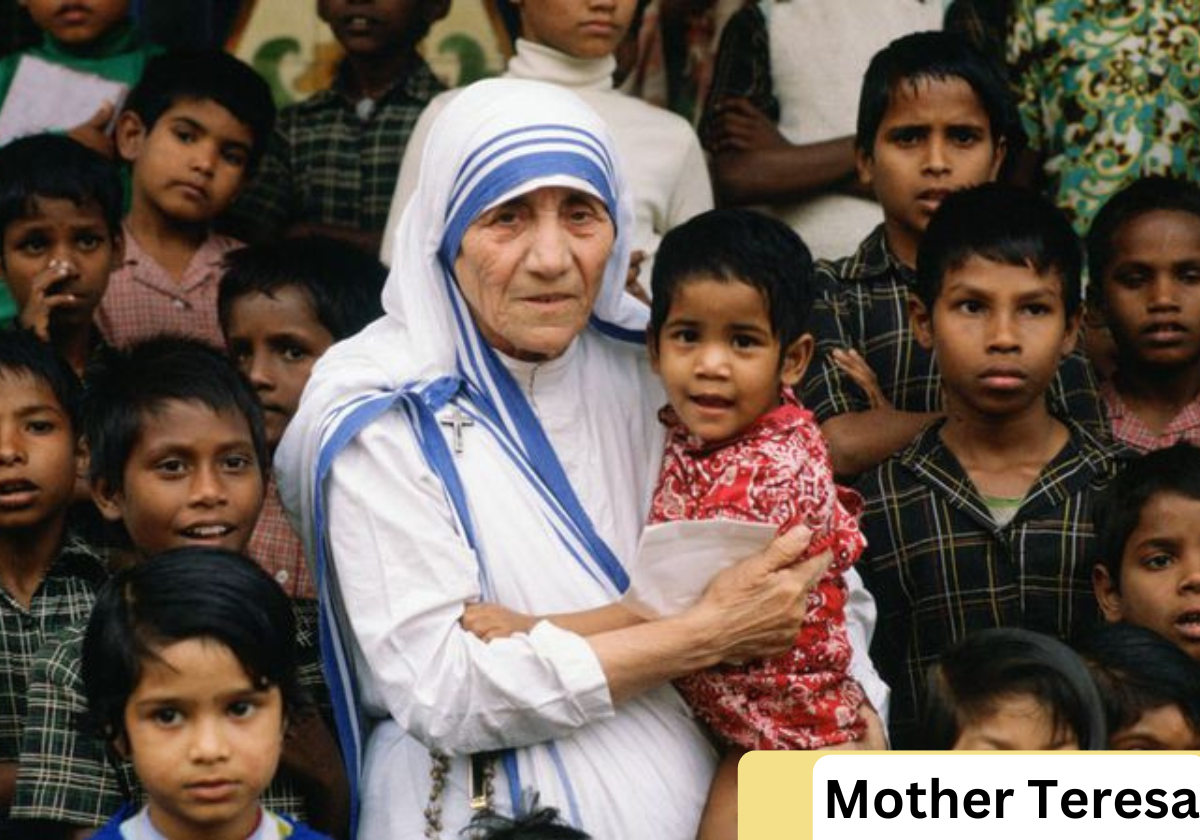Mother Teresa, whose birth name was Anjezë Gonxhe Bojaxhiu (born on August 26, 1910, in Skopje, in North Macedonia) known today for her dedication to the poor and sick. Due to her work, she gained the title of Mother Teresa, in Times Magazine, and her efforts in fighting poverty would later earn her the Nobel Award for Peace in the year of 1979. As a woman of many words, she continues to drive the world long after her death, on the 5th of September 1997, with her everlasting legacy of love and service.
Mother Teresa: Early Life and Call to Serve
Mother Teresa was born into an Albanian family, and during her formative years was imbued with a strong religious devotion. At the age of 12, she had the compass towards joining the Loreto Sisters, which is an Irish Order of nuns, after developing a strong will to serve the poor. Following the completion of her training, she started working as a nurturing educator at a Kendra called Kolkata.
Teaching her students in Calcutta, Mother Teresa was exposed to the widespread suffering and poverty of the bustling streets. The sight of beggars, children with leprosy and sick children left a lasting purpose in her life. She understood her mission was no longer to only teach but rather to take care of those in need on the streets of the city.
Mother Teresa: The Missionaries of Charity
In 1948, Mother Teresa was able to get permission from the Vatican and severed her connection with the sisters from Loreto to embark on a new mission on her own. She was able to go into the slums of Calcutta and provide help to the sick, abandoned, and orphans. She began the Missionaries of Charity, a group of nuns whose objective was to aid the poorest individuals in society. The charity program that started with a couple of women expanded to many different nations and helped thousands.
The Missionaries of Charity operated orphanages, hospices for the terminally ill, leprosy colonies, and care clinics for the indigent. Mother Teresa and her adherents often worked in what most would consider a hard environment and extended their compassion to those who had no access to the basic needs of life or even healthcare. Mother Teresa’s care, humility, and self-denying love inspired her followers to whom she rendered her services, and her mission quickly spread to other continents as well.
Mother Teresa: Humanitarian Efforts and the Nobel Peace Prize
Mother Teresa’s humanitarian efforts were recognized. In 1979, she got the Nobel Peace Prize in recognition of her humanitarian work. In her speech during the reception, she made it clear that the efforts aimed at serving the community were not intended for any recognition. She particularly added, “I am a little pencil in the hand of a writing God who is sending a love letter to the world.”
Irrespective of being a famous and well-known person, Mother Teresa’s virtue of humility led her to continue with her work. She shared the life of the poor and continued to minister to the poor with her own hands. Such humility and service were an inspiration to people of all faiths, traditions, and national backgrounds, leading many to take up charitable work and serve people in need.
Mother Teresa’s impact encompassed a level that transcended Kolkata, achieving worldwide recognition. Mother Teresa was frequently invited to speak about her volunteering initiatives and thus, garnered international fame, all of which stemmed from the fact that she was an influential figure. She is now widely regarded as the embodiment of humanity, containing millions of the world’s most hardened outcasts. Considering her relentless efforts and devotion to bringing peace and compassion, it’s unsurprising that her moral core exuded such immense warmth, especially for individuals in pain.
Mother Teresa: Controversies and Criticisms
While many regard her as a saint and relentlessly praise her humanitarian contributions, others tend to skew the narrative, resulting in Mother Teresa facing criticism. She has been criticized for being against abortion and birth control due to her perception of the value and sanctity of life. Furthermore, she was also accused of opposing pain relief and medical treatment at the homes of dying people as her actions and words suggested a spiritual focus on death instead.
All of the above controversies aside, her strength and resolve to challenge immoral acts such as violence and oppression serve as an inspiration for others in times of need. This goes to show that kindness, selfless commitment, and compassion are the essence of humanity.
Mother Teresa: Legacy and Canonization
An incredible woman with the heart of a saint as most deemed her, St. Mother Teresa left this world on the 5th of September 1997, at the tender age of 87. Her contribution to shaping the lives of the underprivileged is unheard of and leaves an egregious legacy. As a canonized saint, her contributions and unparalleled work were truly recognized by the Catholic church and were later on endorsed by Pope Francis in 2016.
Three decades later, she served as an inspiration to many alumni who sought to make a difference through helping those in need. Her establishment and work, the Missionaries of Charity, has continued to cater for the masses who serve the sick and the dying. To this day, she is rejoiced by people of all faiths as a true example of love and sacrifice.
Conclusion
Mother Teresa’s existence has been recommended for one great aim service to humanity. To some degree, she changed the lives of millions of people with her love and compassion and simultaneously taught humanity the virtue of love and selfless service. Her contributions and devotion to the poor earned her the status of ‘saint’ in the eyes of many and to our day she continues to motivate plenty to follow her example. The heritage of Mother Teresa is the guiding light for everyone saying that even a little bit of the goodness done by anyone can be enough to make a great difference in the deep world in which we exist.

